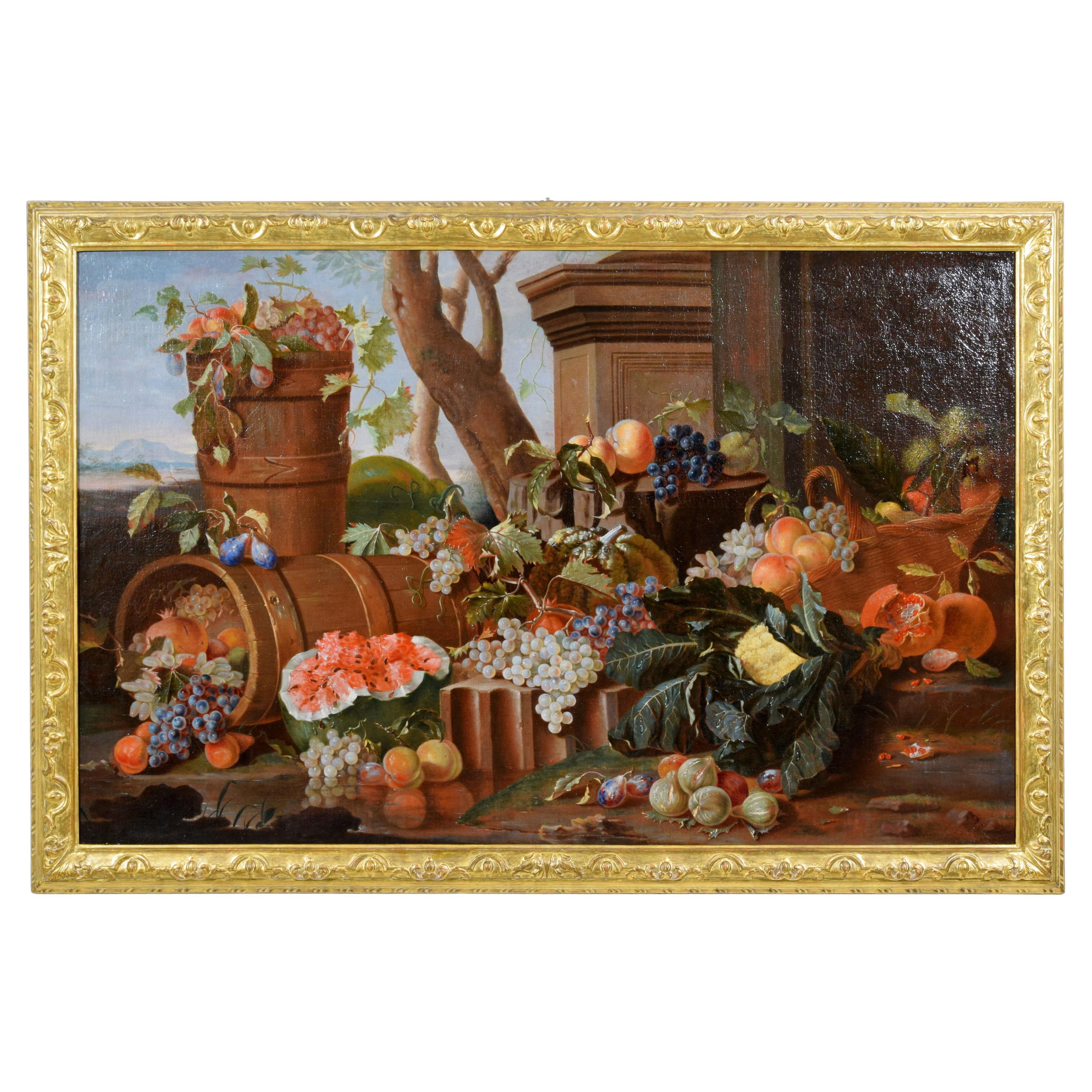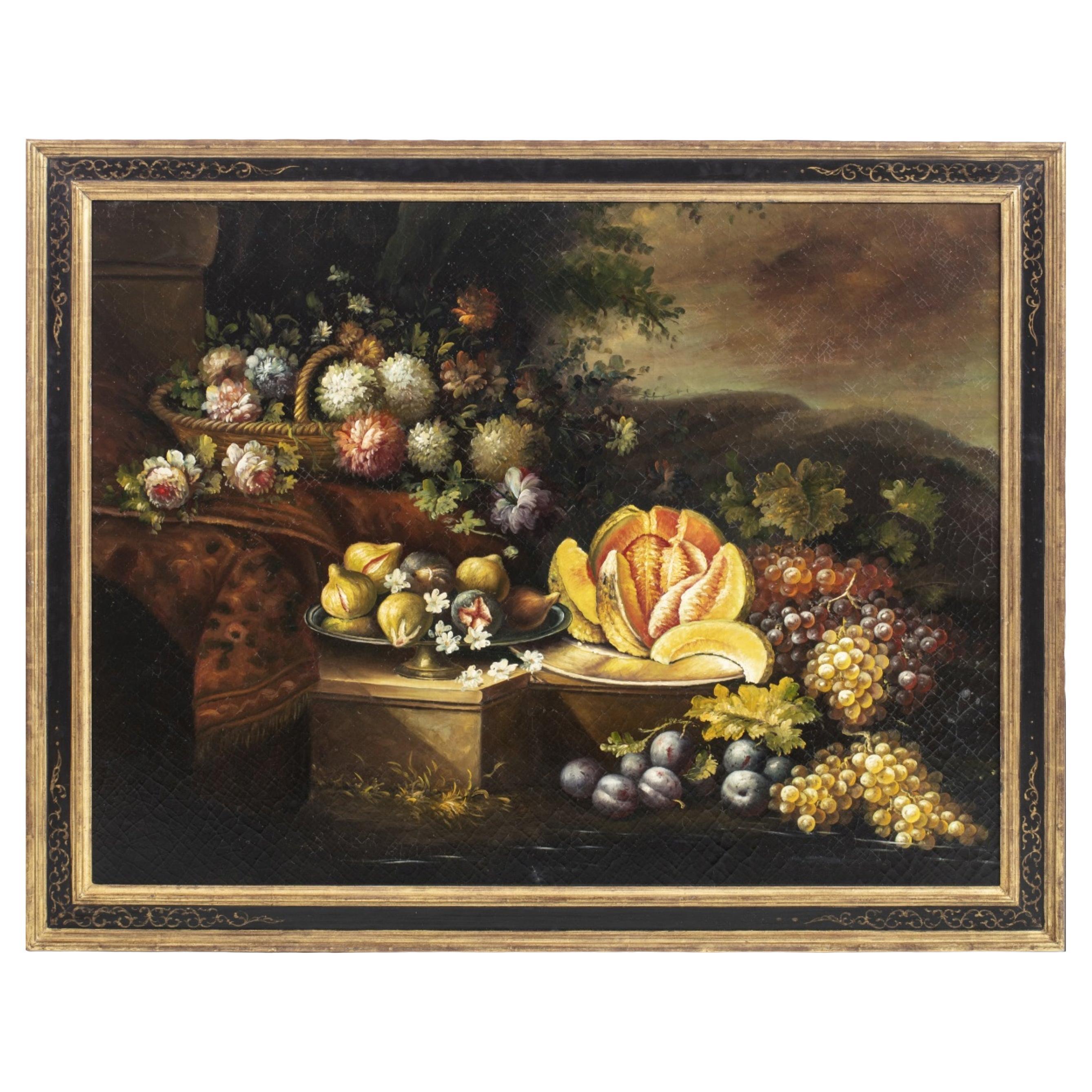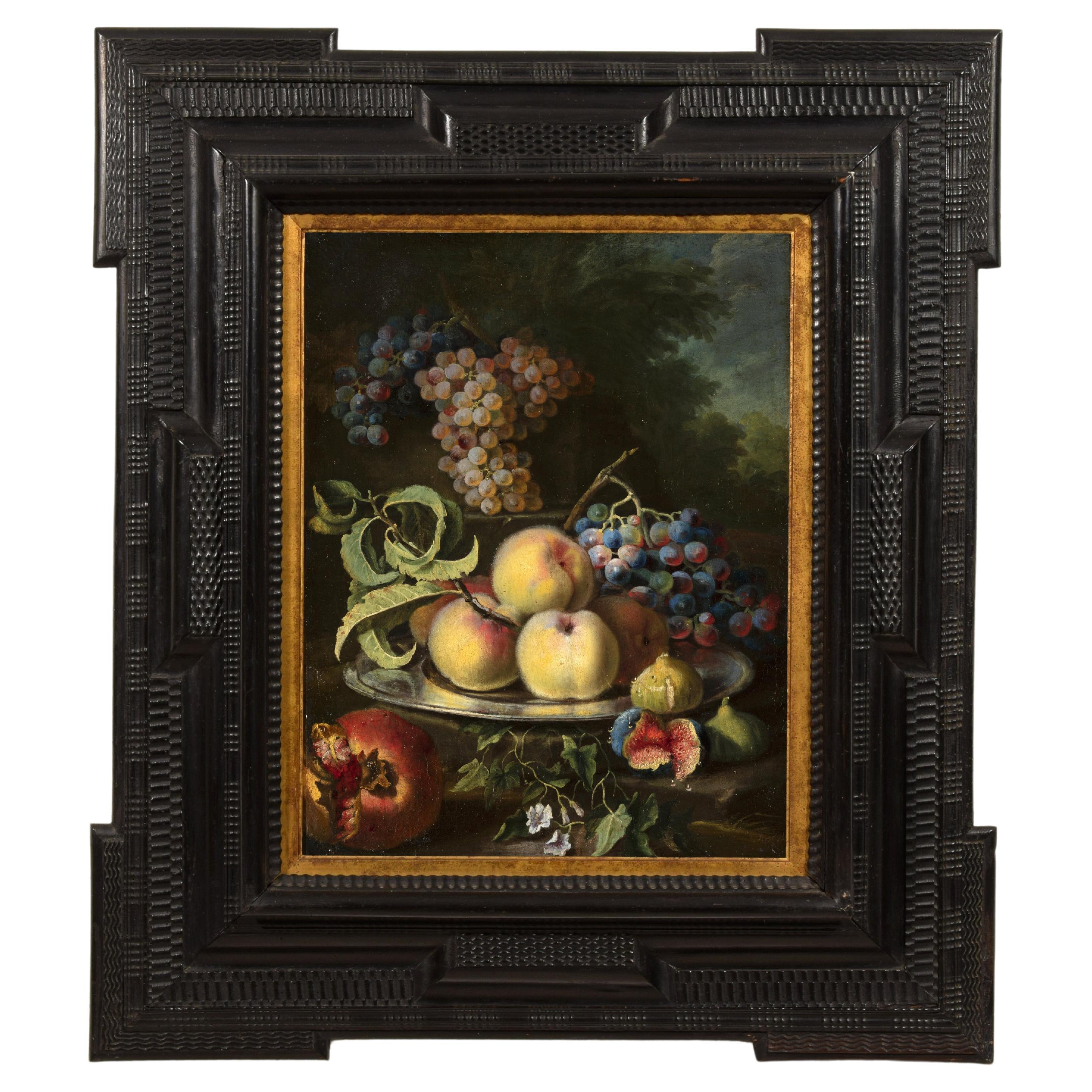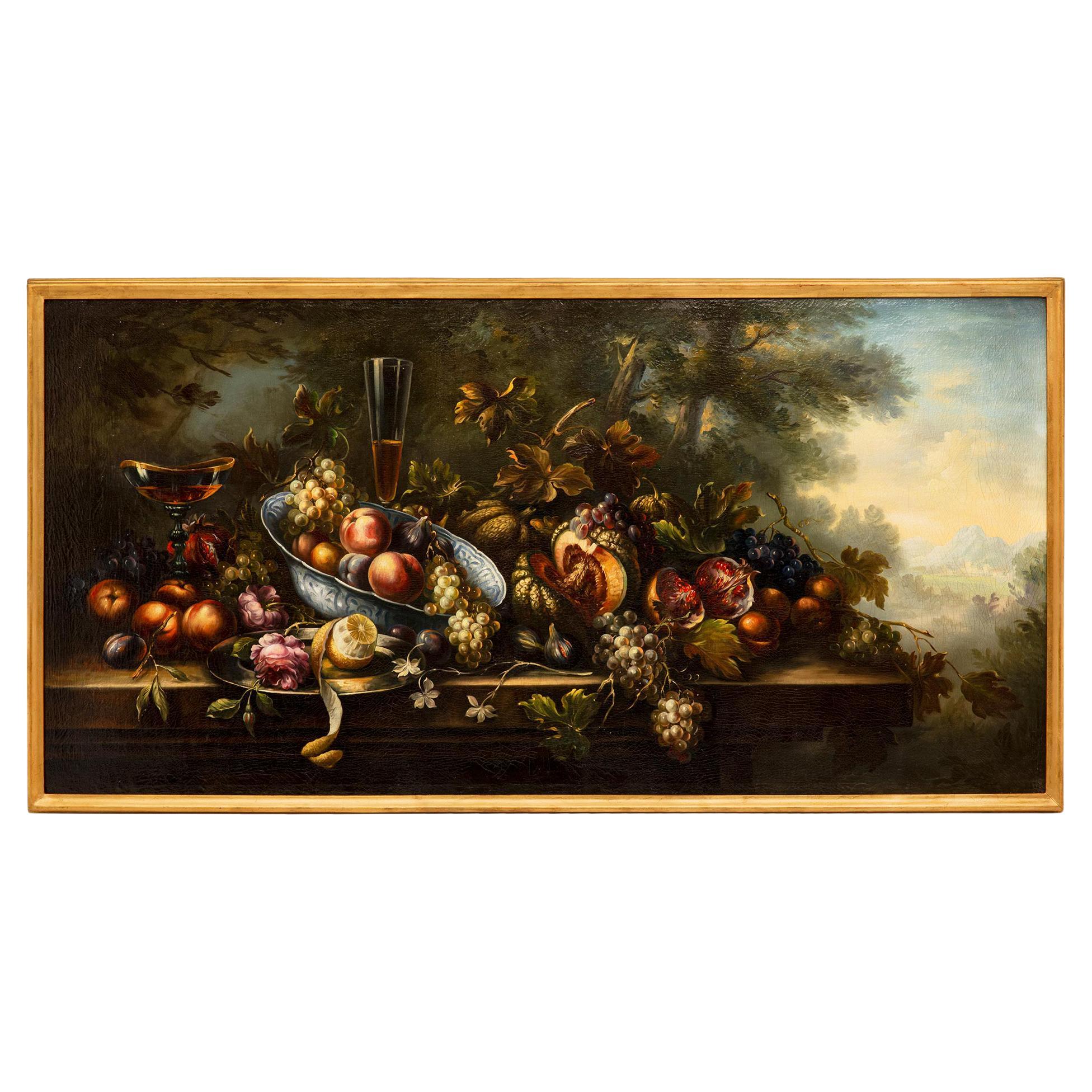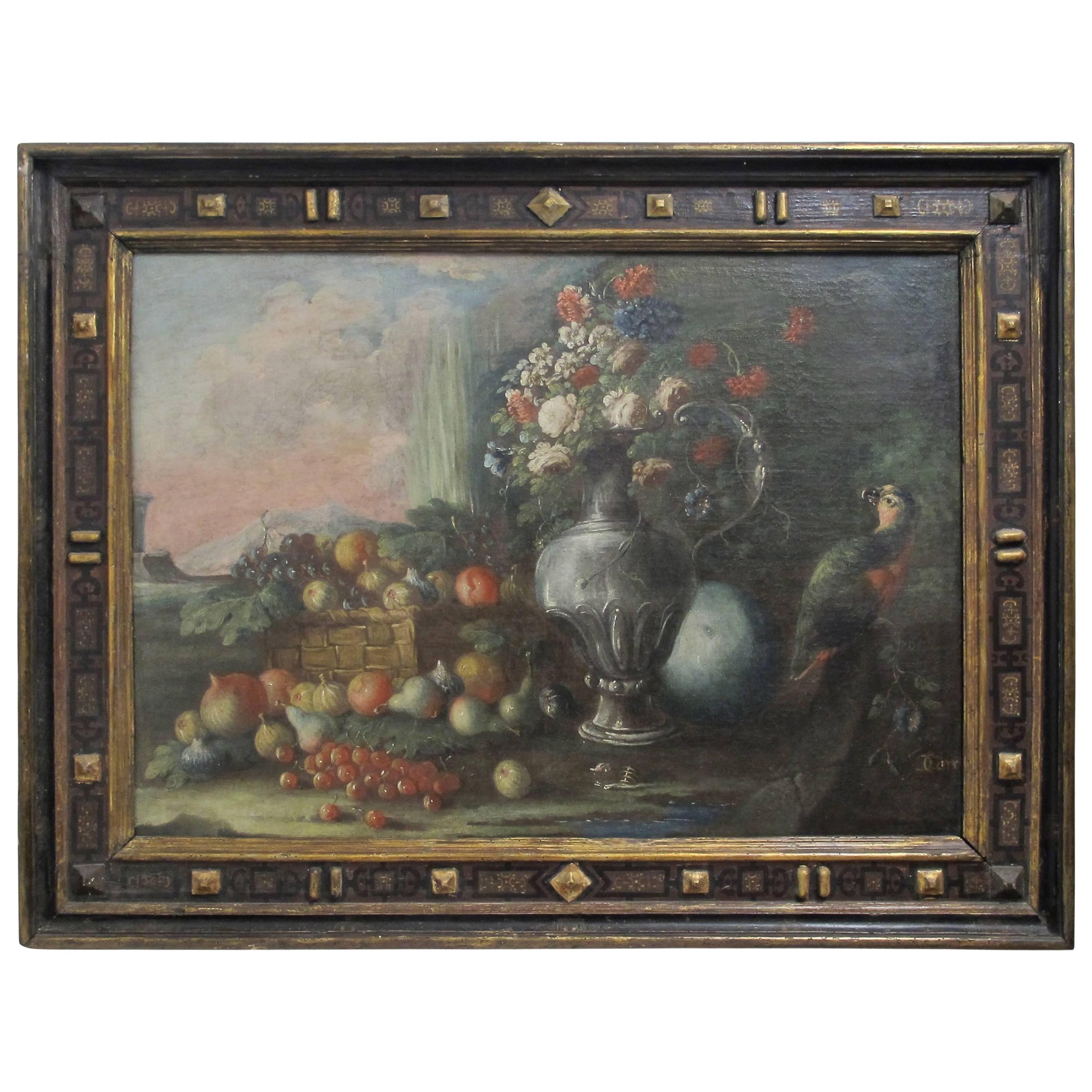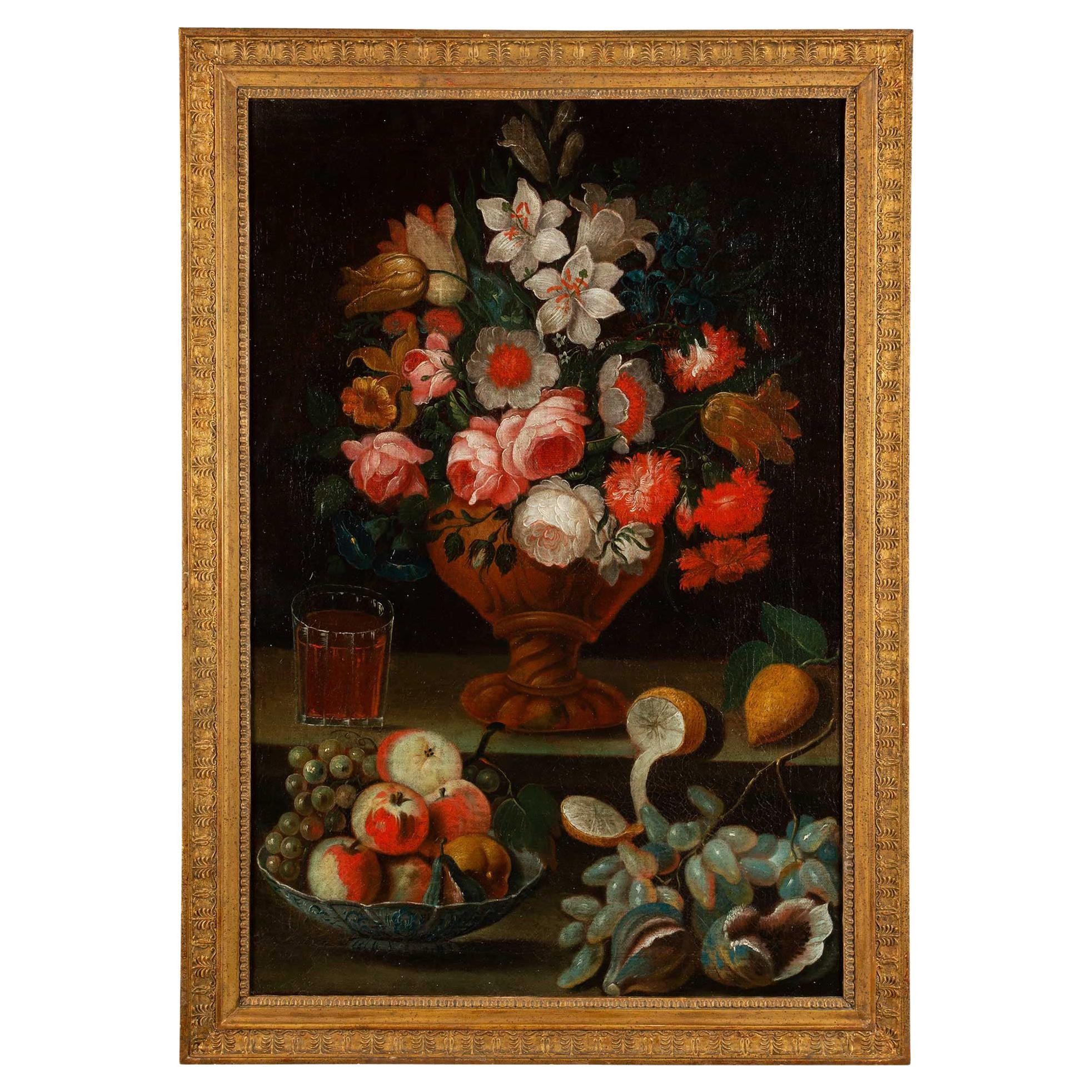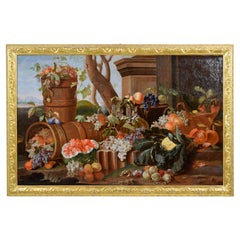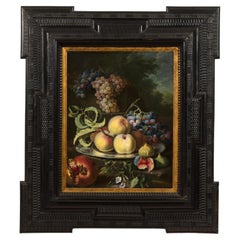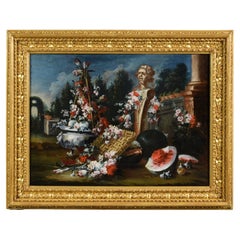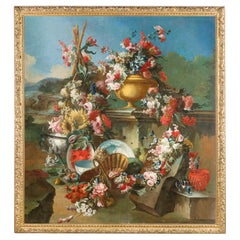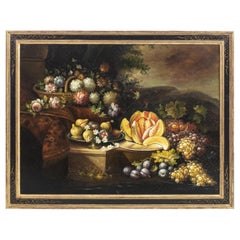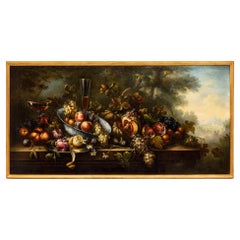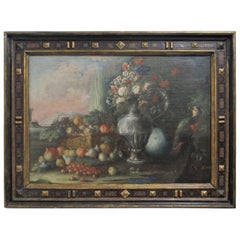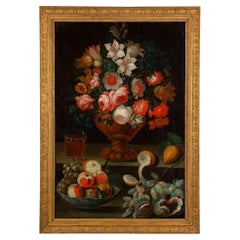Items Similar to 18th Century, Italian Painting Still Life by Giovanni Paolo Castelli Lo Spadino
Want more images or videos?
Request additional images or videos from the seller
1 of 20
18th Century, Italian Painting Still Life by Giovanni Paolo Castelli Lo Spadino
$17,131.06
£12,840.79
€14,500
CA$23,535.17
A$26,274.80
CHF 13,767.60
MX$321,629.36
NOK 174,848.67
SEK 164,860.09
DKK 110,379.29
About the Item
Giovanni Paolo Castelli, known as "Lo Spadino" (Rome 1659 – around 1730)
Still Life with a Composition of Fruit
Dimensions: frame cm L 76.5 x H 61 x D 6.5. Canvas cm L 55.5 x H 40
This oil-on-canvas painting, of excellent quality, depicts a still life with a composition of fruit. White and black grapes, peaches, figs, and quinces are arranged inside a glass bowl, whose transparency is masterfully rendered through delicate highlights that emphasize the reflections of light. The composition occupies the entire canvas; the grapes, vine leaves, and some fruits placed outside the bowl are partially depicted, as if they were spilling out of the viewer's sight and the frame. This is a typical Baroque trick that enhances the theatricality and abundance, creating a composition that is not static but engaging. Little is revealed of the environment in which the fruit is portrayed; the fruit is lit by a light coming from the left, which highlights the colors and forms through skillful use of shadows, some of which are very pronounced.
Stylistically, this work fits into the catalog of Giovanni Paolo Castelli, known as "Lo Spadino" (Rome 1659-1730). The exuberant Baroque decoration, the quality of the fruit depiction, and the saturated, vibrant color palette are all elements that characterize the known works of the Roman painter.
Giovanni Paolo Castelli, called "Lo Spadino," is the most famous figure in a family of artists specializing in still lifes, active in Rome during the second half of the 17th century and the early decades of the 18th. The Castelli family included three related painters: the brothers Bartolomeo (1641-1686) and Giovanni Paolo, separated by eighteen years, and Giovanni Paolo’s son, also named Bartolomeo (1696-1738). Giovanni Paolo is the most famous and documented member of the Castelli family, known as "Lo Spadino," a nickname derived from a small dagger that he symbolically placed among the fruit in a painting, which was later adopted by his son and also used in official documents.
Giovanni Paolo was born in Rome on April 8, 1659, the son of Felice, originally from Montalto delle Marche, and Domenica Crescenzi, from Rome. On March 28, 1690, he married Apollonia De Marchis, daughter and sister of two "quadrari" (painters specialized in the depiction of frames), Giovanni and Tommaso, who later helped spread Castelli’s works.
The painter lived in Rome, as evidenced by parish records from San Lorenzo in Lucina and Santa Maria del Popolo. He spent his youth near the port of Ripetta and always lived in the vicinity (via del Babuino, Corso, and via dei Condotti). Between 1680 and 1683, there is a documentary gap due to the fact that the painter served a prison sentence for murder.
Giovanni Paolo received his first artistic training in his elder brother Bartolomeo's workshop, who was also a painter of still lifes. After Bartolomeo's death in 1686, Giovanni Paolo inherited the workshop, the paintings, and the clientele, receiving important commissions from Roman noble families. His works are cataloged in the most important Roman and Italian collections, such as the Corsini, Colonna, Borghese, Pamphili, and Chigi galleries. His close relationship with the Flemish painter Giovanni Herinans, court painter to the Pamphili family, and his connection to the artist Adriano Honinck demonstrate his strong ties to the Northern European artistic environment. Moreover, between 1671 and 1674, he lived near Abraham Brueghel, whose works had a significant influence on him, imparting a taste for bold, intense color combinations. He was also greatly influenced by the German artist Christian Berentz (1658-1722), who arrived in Rome in the 1680s and remained there until his death.
Through Berentz’s example, Castelli adopted the habit of including transparent or reflective objects in his compositions, such as crystal glasses, glass fruit bowls, and silver objects, which allowed him to explore the multiple possibilities of light play. While Bartolomeo the elder still adhered to the legacy of Michelangelo Cerquozzi's works, Giovanni Paolo distinguished himself with a more vibrant, free, and expressive use of color, achieving the highest acclaim within the Castelli family as the finest interpreter of the prevailing Baroque fervor.
Giovanni Paolo Castelli died in Rome around 1730.
The work under study fits perfectly among the paintings influenced by Berentz’s exploration of light reflections on glass and crystal. The fruit bowl depicted here shows a perfect rendering of the material’s transparency, with the fruits described in apparent disorder, yet carefully balanced in their color and form. Even where the grape bunch seems to fall towards the left, it finds a balance in the opposing branch of the fig. Similar compositions and glass bowls frequently appear in his paintings. Below are some significant examples for comparison.
The artwork is presented within a wood frame in style, lacquered to faux marble.
We apologize for any translation errors from Italian. Please contact us to read the expertise in Italian.
- Dimensions:Height: 24.02 in (61 cm)Width: 30.32 in (77 cm)Depth: 2.76 in (7 cm)
- Style:Baroque (Of the Period)
- Materials and Techniques:
- Place of Origin:
- Period:
- Date of Manufacture:e.g. 1686-1730
- Condition:Wear consistent with age and use.
- Seller Location:IT
- Reference Number:1stDibs: LU4405243682552
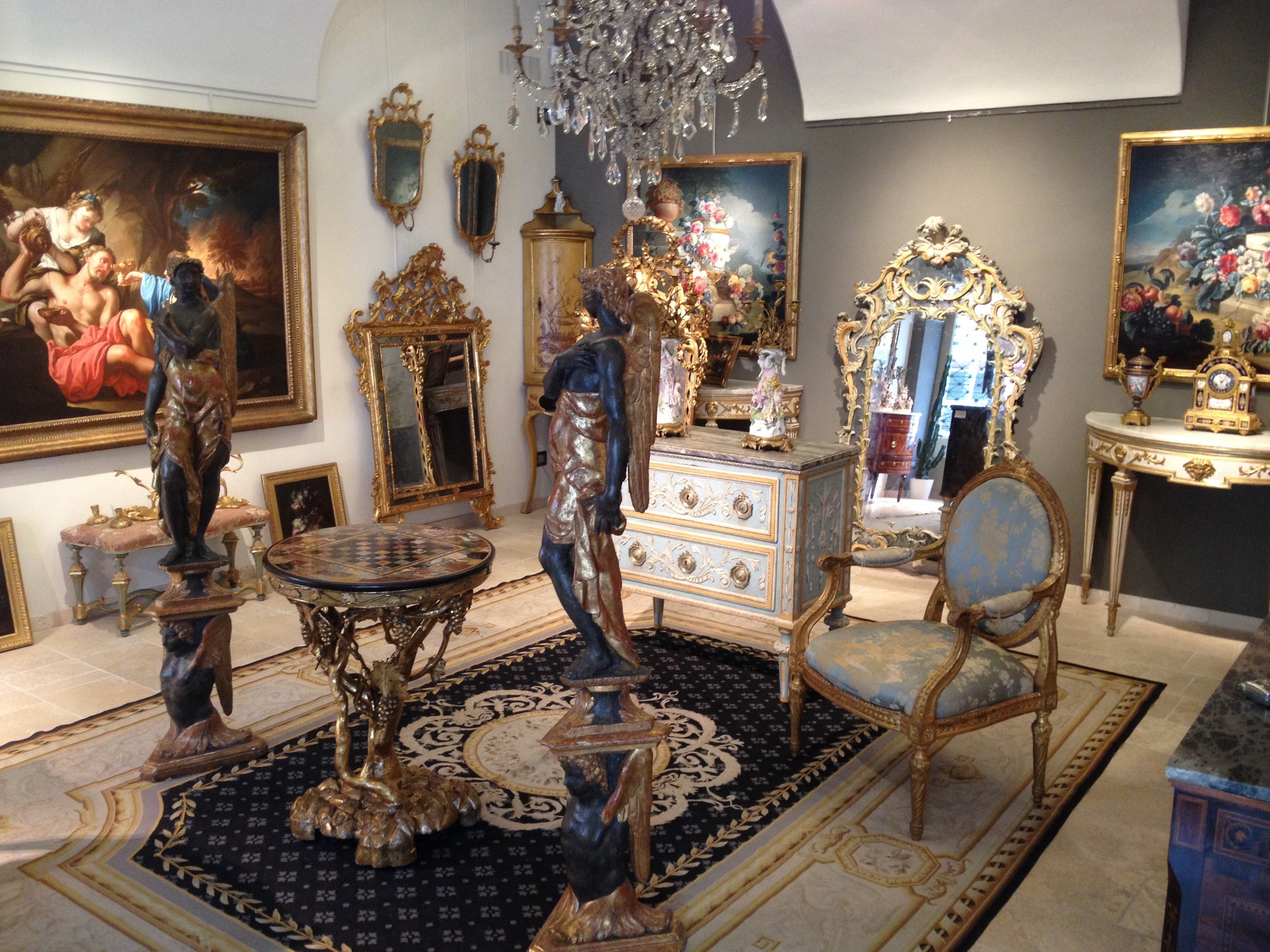
About the Seller
5.0
Platinum Seller
Premium sellers with a 4.7+ rating and 24-hour response times
Established in 1980
1stDibs seller since 2019
56 sales on 1stDibs
Typical response time: 1 hour
- ShippingRetrieving quote...Shipping from: Italy
- Return Policy
Authenticity Guarantee
In the unlikely event there’s an issue with an item’s authenticity, contact us within 1 year for a full refund. DetailsMoney-Back Guarantee
If your item is not as described, is damaged in transit, or does not arrive, contact us within 7 days for a full refund. Details24-Hour Cancellation
You have a 24-hour grace period in which to reconsider your purchase, with no questions asked.Vetted Professional Sellers
Our world-class sellers must adhere to strict standards for service and quality, maintaining the integrity of our listings.Price-Match Guarantee
If you find that a seller listed the same item for a lower price elsewhere, we’ll match it.Trusted Global Delivery
Our best-in-class carrier network provides specialized shipping options worldwide, including custom delivery.More From This Seller
View All18th Century, Italian Oil on Canvas Still Life by Pietro Navarra
Located in IT
18th century, Italian oil on canvas still life by Pietro Navarra
Oil on canvas, canvas measures: cm H 103 x W 164, framed measures...
Category
Antique 18th Century Italian Baroque Paintings
Materials
Canvas
$51,983 Sale Price
20% Off
18th Century, Painting with Still Life by Maximilian Pfeiler
Located in IT
Maximilian Pfeiler (active Rome, circa 1694-circa 1721 Budapest)
Still life with peaches, grapes, figs and pomegranate
Oil on canvas, Measures: cm H 63,5 x W 47. With frame cm ...
Category
Antique Early 18th Century Italian Baroque Paintings
Materials
Canvas, Wood
18th Century, Italian Still Life Painting Attributed to Francesco Lavagna
By Francesco Lavagna
Located in IT
Francesco Lavagna (Italy -Naples 1684-1724)
"Still life with flowers and watermelon and hermas with garden in the background"
The painting, beautifully made and in good condition, d...
Category
Antique Early 18th Century Italian Baroque Paintings
Materials
Canvas
$17,485 Sale Price
20% Off
18th Century, Italian Painted with Still Life by Francesco Lavagna
By Francesco Lavagna
Located in IT
18th Century, Italian painted with still Life by Francesco Lavagna.
The fine and imposing painting, accompanied by a frame in carved and gilded wood, depicts a sumptuous composition...
Category
Antique Early 18th Century Italian Rococo Paintings
Materials
Canvas
18th Century, Italian Rococo Still Life Painting by Michele A. Rapos
By Michele Antonio Rapos
Located in IT
Michele Antonio Rapos (Turin 1733-1819), Still life of flowers and fruits,
Oil on canvas
frame: cm H 133 x W 124 x D 8 (canvas: cm 108.5 x 108.5)
The painting depicts a triumph of ...
Category
Antique Late 18th Century Italian Rococo Paintings
Materials
Canvas, Giltwood
$39,696 Sale Price
20% Off
17th Century, Flemish Still Life by Gaspar Peeter de Verbruggen the Younger
Located in IT
Gaspar Peeter de Verbruggen the Younger (Antwerp, 1664 – 1730) and Pieter Ykens (1648 – 1695)
Still Life with Fruit, Flowers, and Female Figure (Flora)
Dimensions: Frame: W 143 cm x ...
Category
Antique Late 17th Century Baroque Paintings
Materials
Canvas
You May Also Like
"STILL LIFE" Italian School of the 18th Century
Located in Madrid, ES
"STILL LIFE" Italian School of the 18th Century
Oil on canvas pasted on wood, 18th Century Italian school
Small defects.
Dim.: 80 x 107.5 cm
good conditions
Category
Antique 18th Century Italian Baroque Paintings
Materials
Paint
Italian 18th Century Still Life Oil on Canvas Roman Painting in Original Frame
Located in West Palm Beach, FL
An exquisite Italian early 18th century still life oil on canvas Roman painting in its original giltwood frame. The striking painting depic...
Category
Antique 18th Century Italian Paintings
Materials
Canvas, Giltwood
18th Century Italian Still Life Painting
Located in San Francisco, CA
Beautifully executed large-scale still life painting with overflowing fruit, flowers and a parrot. Oil on canvas, in carved, painted and gilt period frame. Signed in lower right corn...
Category
Antique Early 18th Century Italian Paintings
Materials
Canvas
Italian 17th Century Oil on Canvas Still Life, from Rome
Located in West Palm Beach, FL
A stunning Italian 17th century oil on canvas still life, from Rome. The painting depicts a beautiful fruit bowl and grapes in the foreground and wonderfully executed bouquet of flow...
Category
Antique 17th Century Italian Paintings
Materials
Canvas, Giltwood
Italian 17th Century Still Life Oil on Canvas from Rome
Located in West Palm Beach, FL
A wonderful Italian 17th century still life oil on canvas from Rome. The painting depicts a parrot with fruit at his feet standing next to a vase with a stunning array of colorful an...
Category
Antique 17th Century Italian Paintings
Materials
Canvas, Giltwood
Italian Still Life Painting Oil on Canvas in Flemish Style
Located in Alessandria, Piemonte
Charming still life old Italian painting with beautiful details, in a vintage Italian carved wooden frame
Interesting for a study room .
If You don't want the frame for the paintin...
Category
Mid-20th Century Italian Baroque Paintings
Materials
Giltwood
More Ways To Browse
German Fruit Bowl
Grapes And Peaches
Fruit Bowl With Grapes
Sister Parish Furniture
Sister Parish
German Dagger
Giovanni Paolo Castelli
3 Drawer Chest Lacquered
Antique 18 Wheelers
Antique Bed Frames Mahogany
Antique Birch Desk
Antique Butler Cabinet
Antique Chinese Red Lacquer Cabinet
Antique Clock And Candlesticks
Antique Dome Top Chest
Antique Folding Fans
Antique French Oven
Antique Furniture Brunswick
